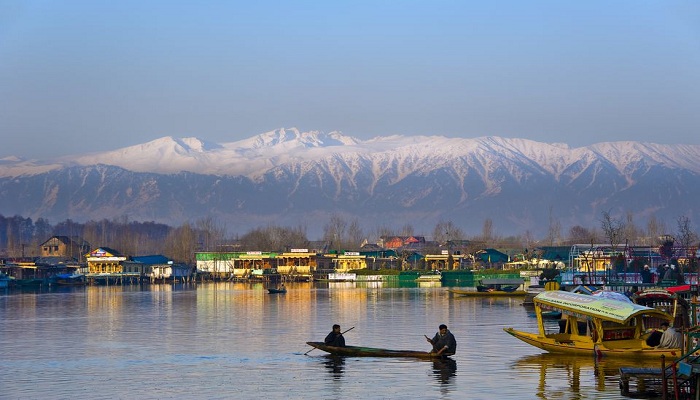Srinagar – Srinagar Center of Kumaon
Since ancient times, located in the state of Uttarakhand on the road to Badrinath, Srinagar has kept its existence alive even after a continuous change. Sripur or Shrikshetra was the only city after the change of the city, before Srinagar, Tehri, came into being. In the year 1680, the population here was more than 7,000 and it was a commercial center known as the market, which was the court of the Pandar dynasty. Many times, after facing a destructive flood, it emerged as a planned city during the British government and is now the best education center in Garhwal. Despite the difficulties of going through many moments of displacement and settlement, this city has never lost its enthusiasm and is turning the pilgrims into the place of pilgrimage and educational center on the path of Badri and Kedar Dham and it still exists.
The local attractions of Srinagar and the nearby extensive locations are related to the rich history here. As it was the capital of the kings of the Panwar dynasty of Garhwal, Srinagar was the center of cultural and political activities in those days, which the people here remember with pride. It is also associated mythologically with Shankaracharya. There have been many dramatic changes from the past to this city, where there are now campus and many search institutions of Garhwal University. The importance here is also in the fact that you can easily travel to Badrinath and Kedarnath from here.
History of Srinagar
In the history of Uttarakhand, a local historian and author of several books, SP Naithani mentioned that unlike Srinagar, on the Alaknanda side, the pottery, bones and residues of Rannihat show that Srinagar was a well-known place 3,000 ago years where people knew how to make weapons of prey and that they used to cook and cook food in pots.
In the mythological texts of the Hindus, it is said to be the field of Lord Shiva. The legend says that Satyagraha obtained the blessing of Shri Vidya after a profound penance, after which he killed the monster Kolasur. Organizing a yagna, according to the Vedic tradition, the restoration of the city. The acquisition of Shri Vidya gave it the name of Shreepur. It was common in ancient India that before the names of the cities, the words of the word were applied because it is the symbol of Lakshmi, who is the goddess of wealth.
The ancient city of Srinagar was established on the banks of the Alaknanda River, and was an important commercial center in the area. In 1803, a strong earthquake in Garhwal erupted this city. After this, Gorkha attacked in the area, due to which the restoration of this city could not be restored. When the Garhwal district was formed under British rule in 1840, its headquarters were built in Pauri.
Place to visit in Srinagar
Kamleshwar / Siddheshwar Temple :
This is the most adored temple in Srinagar. It is said that when the gods were defeated in the battle for the asuras, Lord Vishnu worshiped Lord Shiva to receive the Sudarshan Chakra. He paid him 1,000 lotus flowers (of which the name of the temple is connected) and with each of the offerings, he remembered 1,000 names of Lord Shiva. Lord Shiva hid a flower for his investigation. When Lord Vishnu realized that a flower had diminished, he decided to give it one of his eyes (the eye also called Kamal) instead. Pleased with his devotion, Lord Shiva gave him Sudarshan Chakra, causing him to destroy the asuras.
Shankar Math :
It is an old temple of old age, which is present even after the flood of the year 1894, while its lower part is filled with tons of earth. There is a difference in the builder of this temple, but in the Kedar section there is a description of the goddess Rishi and King Nahush who had austerity here. This place is also called by Thakur. In the year 1670, according to a copper plaque issued by Fatehpati Shah, the then Dharmadhikari Shankar Dhalal bought this land here and established a temple here with the permission of Rajmata. There is a large pavilion in the temple and as there is no pillar in it, it is an example of the search for the stone architecture of that time.
Jain Temple :
Spending much after the flood of 1894, the Jainas of Bhalgaon reconstructed the original temple of Parasnath Jain. The construction of the temple was carried out on the initiative of Pratap Singh and Manohar Lal in 1925 and the impressive size of Mistry of Srinagar. Focusing on small things, a large entrance was reconstructed, a central chamber and a patio or porch. The house of the matrix has a throne built in Rajasthani style and the statue on the throne of four corners is sitting. In the year 1970, the famous Jain monk Sri Vidyanandji came here and stayed a few days.
How to reach Srinagar
By Flight : The nearest airport to Srinagar is Jolly Grant Airport lies in Dehradun at the distance of 125 km away. You can easily access taxi or cabs to reach Srinagar from there.
By Train : The nearest railway station to Srinagar is Kotdwar or Rishikesh which lies at the distance of 130 km and 103 km respectively. You can take taxi for Srinagar from these places.
By Road : Srinagar is well connected with motorable roads with many major destinations of India. You can easily get the roadways to reach Srinagar from any destinations of North India.
Best Time to visit Srinagar?
The most suitable time to visit Srinagar is between September to March. Just take some warm clothes and start your trip to Srinagar at this time.

